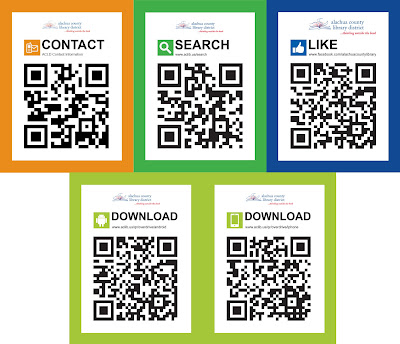 |
| The 68x44 inch reference desk area display poster promotes the library's OverDrive database service. |
This large format poster is 68x44 inches. However, my in-house large format printer--a Hewlett-Packard DesignJet 800--is only 36 inches wide. So in order to create the full sized poster, I have to print the image out in two horizontal strips, then tape the top and bottom halves together. It works out pretty well, considering the logistics and cost savings of using an outside printer.
 |
| Arrg! Printer drippage! |
So when I'm printing a really long poster and am doing well, then get a big ink blotch on in the last foot, it is particularly annoying. I can live with it spilling ink in a place that would be easy to print out as a detail patch, but if an ink blot is out in the open, it is much more noticeable and annoying. It's such a waste of expensive materials. Do I reprint the entire thing again, knowing I'll most likely get new drops in new places? Or do I try to print out a detail portion to patch it with? Strategy, strategy. Time for a little creative "knifing" to see if I can salvage the two strips by piecing together length-wise, and also making use of whatever remaining detail areas that might serve the piece well.
General concept and supportive text was developed by the display librarian and myself; images came from the OverDrive vendor. QR codes provided during the QR code signage exercise. Quantity: 1 (thank goodness, considering the ink mess).





















